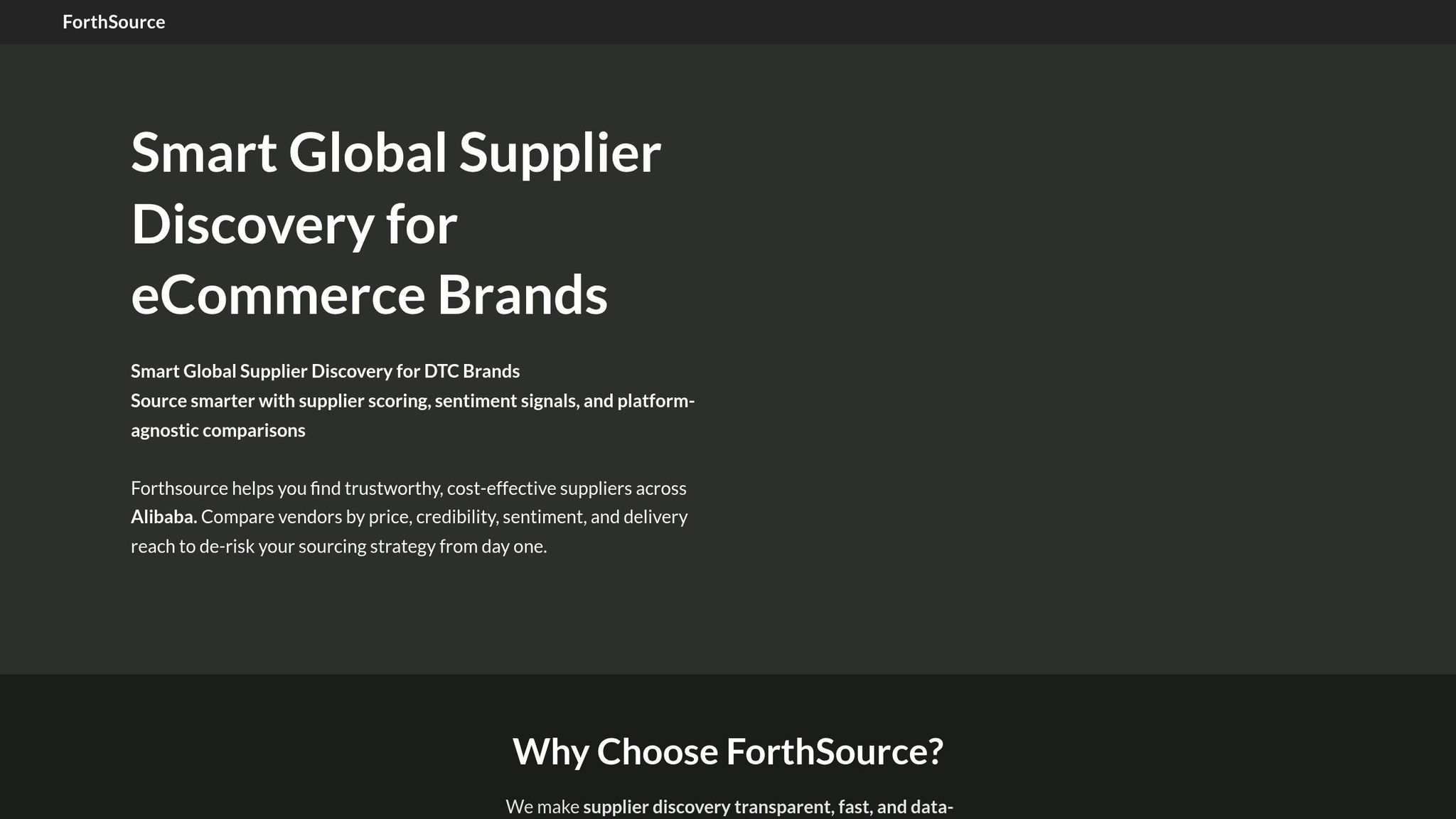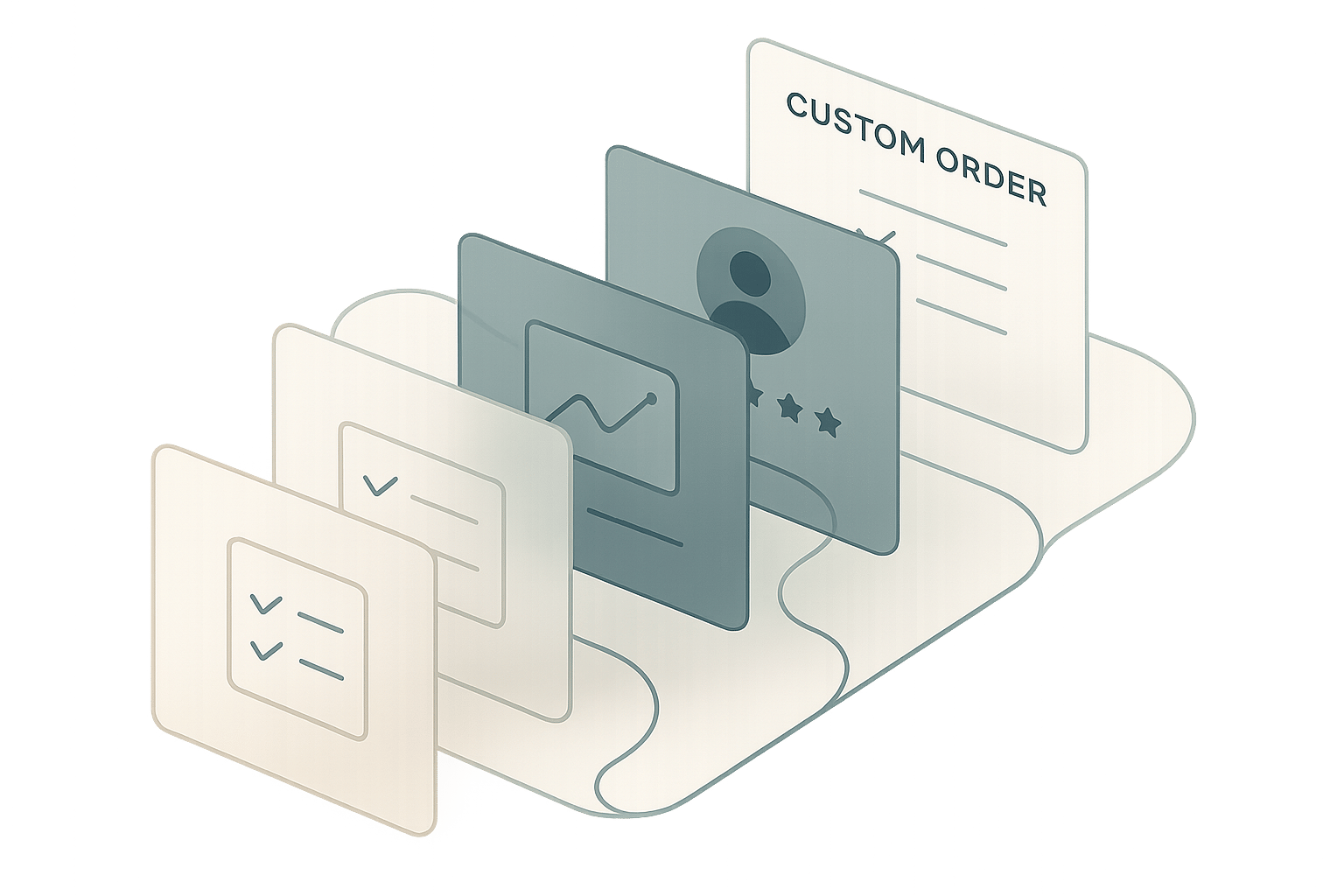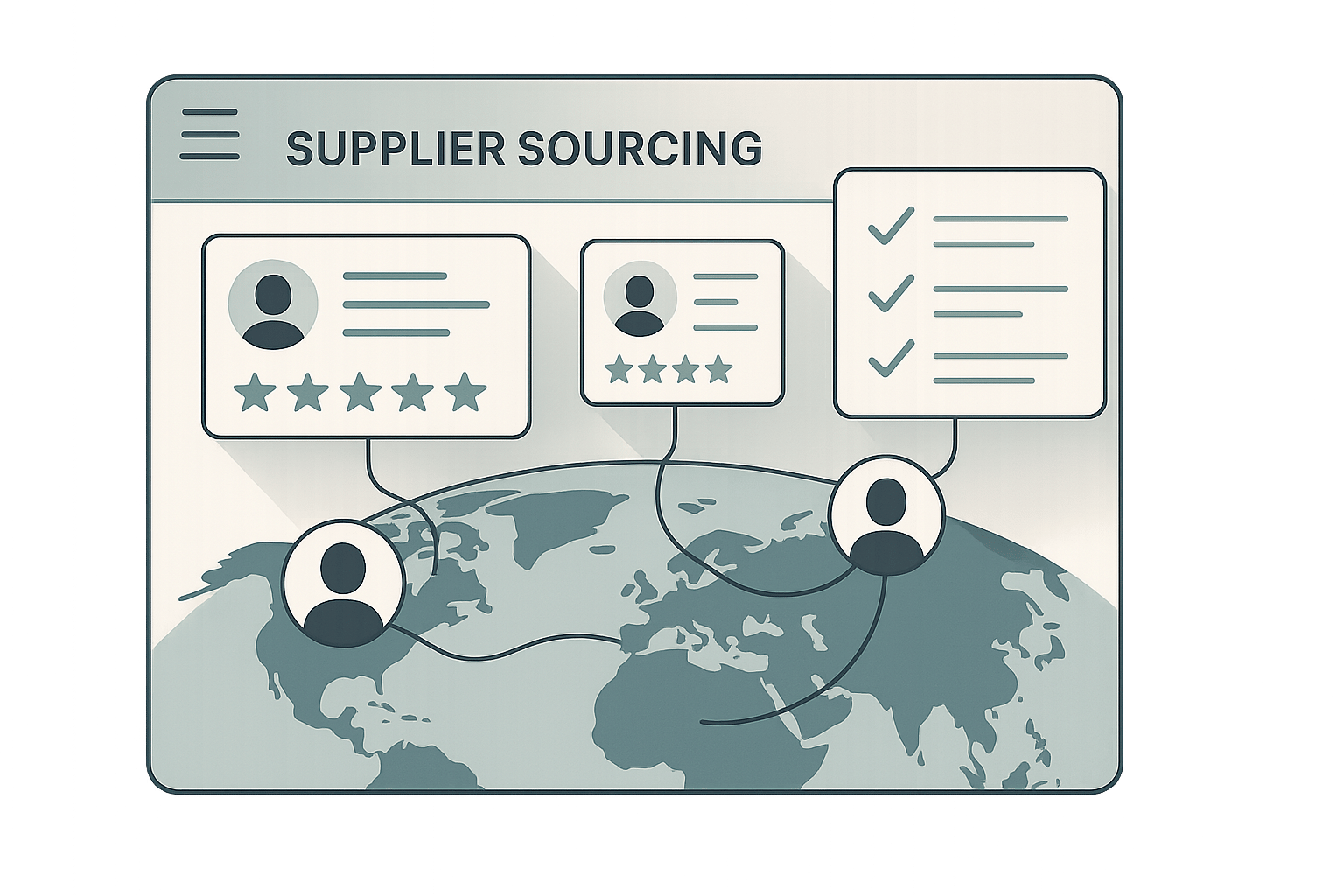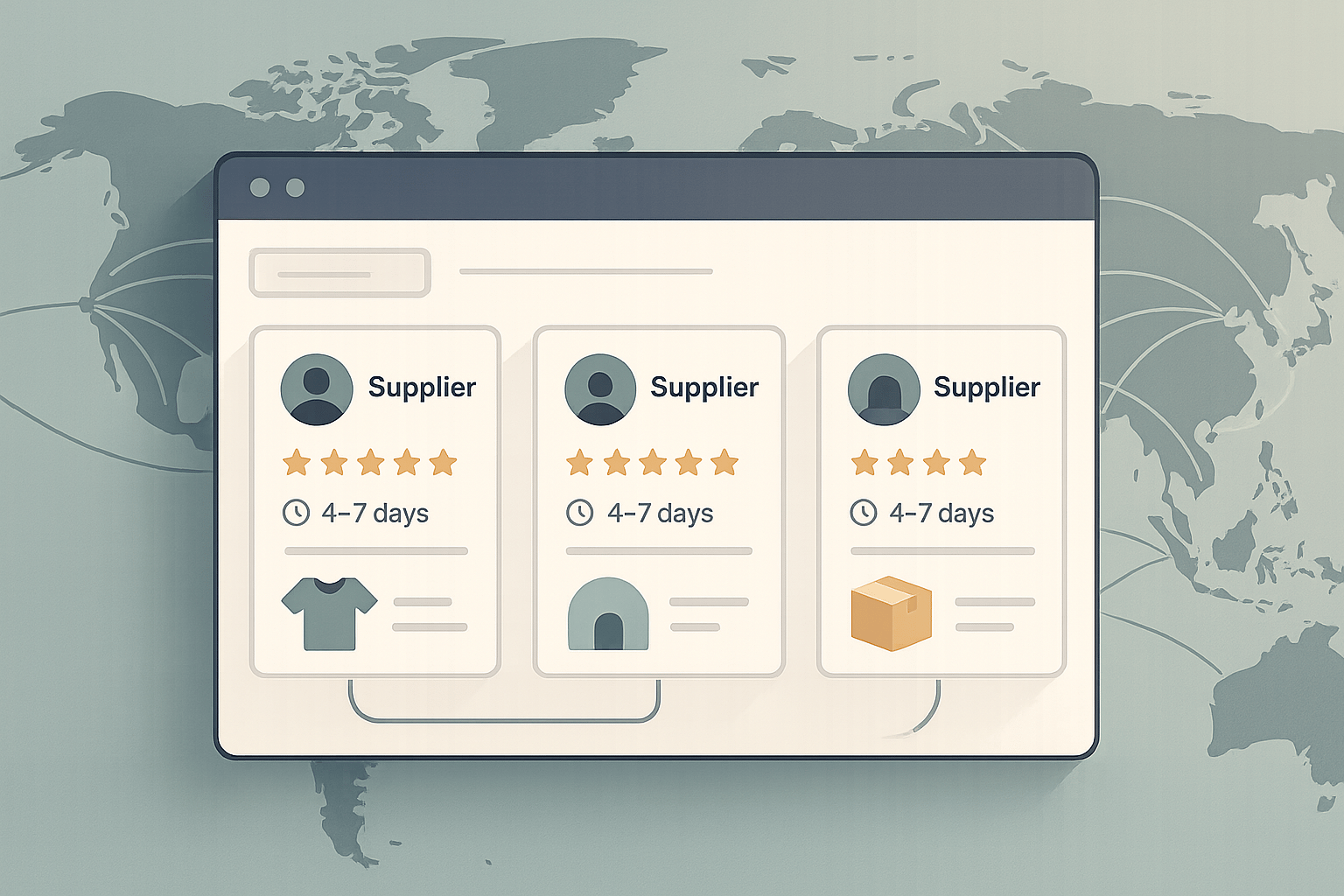Navigating import restrictions can be tricky, but knowing the basics can save you time and money. Every country has unique rules for what products can enter, from outright bans to special permits or tariffs. Here's a quick summary of what you need to know:
- Understand Product Classification: Use the Harmonized System (HS) code to identify your product and its specific import requirements.
- Research Country-Specific Rules: Check official customs websites or trade portals for up-to-date regulations, tariffs, and documentation needs.
- Check Prohibited and Restricted Goods: Some items, like weapons or certain chemicals, may be banned or require special permits.
- Prepare Documentation: Ensure you have the right licenses, permits, and certificates for your product.
- Use Trusted Tools: Government databases, customs brokers, and platforms like ForthSource can simplify compliance.
Staying informed about import restrictions ensures smooth international trade and avoids costly delays. Let’s dive into the details to make the process easier.
Foreign Import Regulations
What Are Import Restrictions and Why Do They Exist?
Import restrictions define the rules and conditions under which products can enter a country. These regulations vary by country and product type, shaping trade policies and ensuring compliance with national priorities. Some goods face minimal hurdles, while others encounter strict controls or outright bans. These rules are often adjusted to reflect political shifts, trade dynamics, or safety concerns. Let’s explore the types of import restrictions and the reasons they’re implemented.
Types of Import Restrictions
Import restrictions generally fall into three broad categories, each with unique compliance requirements:
- Prohibited goods: These are items that are entirely banned from entering a country. For example, the U.S. has prohibited certain cotton products from China’s Xinjiang region due to concerns over forced labor. In such cases, no permits or licenses can override the ban.
- Restricted goods: These require special permits, licenses, or certifications to be imported. Common examples include pharmaceuticals, medical devices, firearms, and certain chemicals. For instance, medical devices need FDA pre-market approval, while firearms imports are regulated by the ATF. Even products like wooden furniture may need phytosanitary certificates to ensure they don’t introduce pests.
- Controlled goods: These goods can be imported but are subject to quotas, tariffs, or specific conditions. Examples include textiles under quota systems, agricultural products with seasonal restrictions, and electronics subject to anti-dumping duties. For instance, the U.S. imposes tariff rate quotas on sugar, allowing a certain quantity to enter at a lower tariff before higher rates apply.
Reasons for Import Restrictions
The motivations behind import restrictions are often strategic, balancing economic, safety, and environmental priorities.
- Public health and safety: Ensuring imported goods meet safety standards is a top priority. Incidents like the thalidomide tragedy underscored the importance of strict drug regulations, while concerns over lead paint in imported toys led to enhanced safety standards for children’s products.
- Environmental protection: Restrictions often aim to safeguard ecosystems or enforce sustainability. For example, the U.S. enforces bans on certain endangered species products under CITES and regulates ozone-depleting substances in line with the Montreal Protocol. Importers may need to provide documentation proving sustainable sourcing or compliance with international agreements.
- Economic protection: Tariffs and quotas are frequently used to protect domestic industries from foreign competition. U.S. tariffs on steel and aluminum, for instance, aim to shield local manufacturers, while agricultural quotas and subsidies help domestic farmers withstand global price pressures.
- National security: Concerns over cybersecurity and geopolitical risks increasingly influence import policies. For example, the U.S. has restricted telecommunications equipment from certain foreign companies to address potential security threats.
- International agreements and sanctions: Trade restrictions often stem from global agreements, such as UN sanctions, bilateral trade deals, or multilateral treaties. These measures can impose specific bans or require additional compliance steps, making it crucial for importers to stay updated on evolving regulations.
Understanding these restrictions and their underlying reasons is essential for navigating global trade and ensuring compliance with ever-changing policies.
How to Check Import Restrictions by Country
If you're navigating the complexities of international trade, understanding import restrictions for each country is essential. Here's how to systematically verify the regulations that apply to your products.
Find the Product Category and HS Code
Start by classifying your product using its Harmonized System (HS) code. This six-digit international code forms the foundation for identifying import requirements. Some countries expand on the HS code with additional digits for more specific classification. For example, a basic cotton t-shirt might have the HS code 610910, but additional digits may vary depending on the destination country.
To determine the correct HS code, visit resources like the U.S. Harmonized Tariff Schedule or the World Customs Organization's online tools. Many government websites also offer user-friendly search features where you can input product descriptions to find the appropriate code. Once you have the HS code, you can research tariffs, quotas, and special requirements for your product in various countries.
Research Country-Specific Regulations
Each country has unique import regulations, which are managed by customs authorities and regulatory agencies. To get accurate and current information, rely on official government websites and trade portals.
The U.S. Department of Commerce's International Trade Administration (ITA) is a valuable resource for understanding import regulations and tariff rates before entering foreign markets. Their Country Commercial Guides provide detailed insights into import procedures, required documentation, and specific restrictions for individual countries.
For additional guidance, the U.S. Small Business Administration (SBA) suggests consulting the customs websites of your target countries. For instance:
- If you're exporting to Canada, refer to the Canada Border Services Agency.
- For European Union markets, use the European Commission's Trade Helpdesk.
Many customs websites feature searchable databases where you can input your HS code to find information on duties and restrictions. Additionally, consider how bilateral trade agreements, such as the United States-Mexico-Canada Agreement (USMCA), might impact your product. These agreements often offer preferential treatment for qualifying goods but come with specific rules of origin.
Once you've reviewed country-specific regulations, it's time to verify whether your product falls under any global or local prohibitions.
Check Both Global and Local Prohibited Items
Some products are restricted or banned due to international sanctions or national policies. For global restrictions, consult lists maintained by organizations like the United Nations or national entities such as the U.S. Treasury's Office of Foreign Assets Control (OFAC). Since these lists can change frequently, always confirm the latest status of your product.
National bans often reflect local priorities, such as public health, safety, or environmental concerns. Additionally, many countries regulate dual-use goods - items with both civilian and military applications. Products like certain electronics, chemicals, or manufacturing equipment may require both export licenses and import permits.
When researching, cross-check multiple official sources to ensure your product complies with all relevant international, bilateral, and domestic regulations. This thorough approach minimizes risks and helps you navigate the complexities of global trade with confidence.
Checking Required Permits, Licenses, and Documentation
Certain products need specific permits or certifications before they can legally enter a country. Without the proper paperwork, you risk delays, fines, or even having your goods seized.
Find Necessary Permits and Licenses
While many goods don't require an import license, some do need special permits or certifications from federal agencies. To figure out what applies to your product, start by identifying the federal agency responsible for its category, origin, and intended use.
For example, U.S. Customs and Border Protection (CBP) is the primary agency handling imports, but they work closely with other specialized agencies:
- Agricultural and food products: The Department of Agriculture (USDA) oversees these. The Animal and Plant Health Inspection Service (APHIS) handles phytosanitary permits, while the Food Safety and Inspection Service (FSIS) ensures meat and poultry safety.
- Consumer goods: Items like cosmetics, medical devices, and dietary supplements often fall under the Food and Drug Administration (FDA). General consumer products must meet safety standards enforced by the Consumer Product Safety Commission (CPSC).
- Electronics and telecommunications equipment: These must comply with Federal Communications Commission (FCC) regulations.
- Dual-use goods: Items like certain electronics, software, or defense-related products are regulated by the Bureau of Industry and Security (BIS).
- Environmental and chemical products: These require approval from the Environmental Protection Agency (EPA).
- Wildlife-derived products: Permits from the U.S. Fish and Wildlife Service (FWS) are necessary, as they enforce laws like the Lacey Act and CITES regulations.
CBP also suggests consulting with an import specialist at their Centers of Excellence and Expertise to ensure you're on the right track.
After identifying the necessary permits, the next step is to gather and verify all required documentation.
Prepare Accurate Documentation
Double-check current requirements directly with the relevant agency. Once you know what permits are needed, focus on preparing the right paperwork. Each agency has its own forms and documentation requirements, so it’s essential to confirm these with the port of entry.
You might also want to consider hiring a licensed customs broker. These professionals can handle filings, classify products correctly, and manage agency submissions. They stay up-to-date on tariff laws and regulations, which can ease your compliance process significantly.
sbb-itb-633367f
Tools and Resources for Checking Import Restrictions
When it comes to navigating import restrictions and ensuring supplier reliability, having the right tools at your disposal can make all the difference. Here are some key resources to consider:
Official Government and Customs Sources
If you're looking for the most reliable and up-to-date information, official government and customs resources should be your first stop. These tools provide authoritative data that ensures compliance with import regulations.
- U.S. Customs and Border Protection (CBP): The CBP's Automated Commercial Environment (ACE) portal is an invaluable resource. It offers detailed information on tariff classifications, duty rates, and any special requirements. Additionally, the CBP website includes country-specific guides that outline prohibited and restricted items for major trading partners.
- The Harmonized Tariff Schedule (HTS): This database goes beyond basic product classifications. It provides in-depth information on tariffs, special programs, and explanatory notes that highlight additional requirements for specific goods. It’s a must-use tool for ensuring compliance.
- Foreign government trade websites: For destination-specific regulations, these sites are incredibly helpful. For example, the European Union's TARIC database provides detailed insights into EU import conditions. Similarly, customs agencies in Canada, Australia, and the UK offer online portals with relevant information.
- Trade associations and chambers of commerce: These organizations often publish industry-specific updates and regulatory alerts. They can keep you informed about new restrictions or changes in enforcement practices that may affect your imports.
- Official mobile apps: Many governments now offer mobile apps for quick access to import restriction data. For instance, the CBP mobile app includes a duty calculator and tools for checking restricted items, making it a convenient option for on-the-go research.
These resources not only help you stay compliant but also complement supplier evaluation platforms by providing accurate and current regulatory data.
Using ForthSource for Supplier Compliance

In addition to government tools, platforms like ForthSource can simplify the process of verifying supplier reliability while ensuring compliance with import restrictions. ForthSource is a supplier discovery and comparison platform that helps you identify trustworthy suppliers through its proprietary scoring system. It evaluates suppliers based on factors such as pricing, data completeness, and online credibility, allowing you to make informed decisions.
What sets ForthSource apart is its domain trust metrics and access to essential supplier credentials. You can review verification statuses, business registration details, and other critical information - all in one place. With real-time data integration, ForthSource ensures that you’re working with the most accurate and current information, giving you confidence in your sourcing strategy.
Best Practices for Import Compliance
Avoiding costly compliance mistakes requires consistent monitoring and a well-organized approach. Successful importers rely on systematic strategies to keep their operations running smoothly across international borders.
Stay Updated on Regulation Changes
Import regulations are always evolving due to trade policy updates, international agreements, and global events. To stay ahead, it's essential to have a system in place that alerts you to these changes as they happen.
For instance, government websites and industry associations often provide automated alerts. The U.S. Trade Representative's office, for example, offers email notifications about new trade agreements and policy changes. Similarly, customs agencies in regions like the EU, Canada, and Australia provide subscription services to keep importers informed.
To avoid surprises, review regulatory updates on a quarterly basis. This includes checking product classifications, documentation requirements, and restricted goods lists. Timing your reviews around key periods - like the start of a fiscal year or after major trade negotiations - can help you catch updates before they affect your shipments.
With this information in hand, work closely with suppliers who are equally committed to compliance.
Work with Compliant Suppliers
Your suppliers play a key role in ensuring smooth import operations. Partnering with manufacturers who understand export regulations and provide thorough documentation can significantly reduce compliance risks.
Start by verifying your suppliers' credentials. Request copies of their business licenses, export permits, and quality certifications. Reliable suppliers will readily share these documents, often maintaining digital versions for easy access. Be cautious of suppliers who hesitate or provide incomplete paperwork, as this could signal future compliance issues.
Set clear expectations from the beginning by specifying the exact documentation you need for each shipment. This might include commercial invoices, packing lists, certificates of origin, and product-specific certifications. Providing templates or checklists can help suppliers meet your standards consistently.
Regularly auditing your suppliers is another way to maintain compliance. These audits don’t always require expensive third-party inspections. Simple questionnaires about their export processes, documentation systems, and regulatory knowledge can uncover potential problems early.
Strong partnerships with suppliers who prioritize clear documentation and regulatory updates will help both sides avoid compliance headaches.
Compare Research Methods and Tools
Once your internal processes are updated and you’ve established compliant supplier relationships, it’s time to evaluate the tools and methods available for improving your compliance strategy. Different approaches to researching import restrictions offer unique benefits depending on your needs and product categories.
| Research Method | Best For | Limitations | Time Investment |
|---|---|---|---|
| Government databases | Official data | Complex navigation | Steep learning curve |
| Customs brokers | Complex shipments | Higher cost | Medium, depends on broker availability |
| Trade associations | Industry updates | Sector-specific | Low, mostly passive updates |
| Supplier platforms | Integrated compliance | Moderate effort | Medium, integrated into sourcing |
Government databases are the most authoritative source of information but can be challenging to navigate. For example, the U.S. Harmonized Tariff Schedule includes thousands of product classifications, and finding the right one can take hours without proper training.
Customs brokers bring valuable expertise, especially for complex shipments involving multiple countries or highly regulated products like chemicals or medical devices. However, their consultation fees can add up quickly.
Supplier verification platforms, such as ForthSource, simplify the process by combining supplier credibility checks with regulatory research tools. This integrated approach saves time by streamlining compliance and supplier evaluation into one workflow.
The most effective strategy often combines these methods. Start with government databases for official regulations, use supplier platforms to assess manufacturers, and consult customs brokers for particularly complicated shipments. Together, these tools create a comprehensive and efficient compliance system.
Key Steps for Compliant Importing
Navigating import restrictions successfully requires a clear process to ensure compliance with regulations. Following these steps can help you avoid costly delays and ensure your products arrive without issues.
Begin with accurate product classification by using the Harmonized System (HS) code. This code is essential for identifying your product correctly. Tools like the U.S. Census Bureau's Schedule B Search Engine can help you confirm the right code and avoid errors. Once classified, you can move on to understanding country-specific requirements.
Research regulations for your target country using official government resources. Databases like the Customs Info Database (available at trade.gov) and the FTA Tariff Tool can provide details on duties, taxes, and preferential rates that apply to your product.
Ensure supplier compliance by thoroughly evaluating their processes. Once you’ve identified product and country-specific rules, confirm that your suppliers meet the necessary compliance standards. For example, food importers must verify suppliers align with FDA's Foreign Supplier Verification Program (FSVP).
Check for country-specific denial policies on sensitive items. Some countries have restrictions on defense articles or other controlled goods. The DDTC Public Portal offers updated information on these policies, which can shift due to international relations or trade agreements. Regular monitoring is crucial to stay informed.
Use integrated compliance tools to simplify your research. Tools like ForthSource can consolidate credibility checks and regulatory data, making it easier to manage compliance in one streamlined workflow.
Seek expert advice for complex situations. Customs brokers, freight forwarders, or even customs offices in the destination country can provide formal rulings or clarification on requirements. While consulting experts may involve additional costs, it can save you from much more expensive mistakes later.
FAQs
How do I find the correct HS code for my product, and why does it matter?
To find the right Harmonized System (HS) code for your product, you can turn to online tools like HS code search engines or databases offered by customs authorities. These resources help you pinpoint the correct code by matching your product’s category and specific characteristics.
Using the right HS code is essential because it directly impacts import duties, taxes, and compliance requirements for international shipping. An incorrect code can cause delays, fines, or compliance issues. Taking the time to verify the code upfront can save you from unnecessary headaches and keep your trade processes running smoothly.
What should I do if my product is subject to both international and local import restrictions?
If your product falls under both international and local import restrictions, the first step is to pin down the specific rules and regulations for each region. Dive into official trade and customs resources to figure out what’s required for your product - this could include licenses, permits, or other documentation.
Once you've gathered this information, take the time to confirm tariffs, import procedures, and paperwork for every country involved. It’s also smart to communicate with customs officials to prevent any hiccups like delays or penalties. Paying close attention to these details can make the importing process much smoother and help you avoid headaches like confiscations or fines.
How can I make sure my suppliers comply with U.S. import regulations and provide the necessary documentation?
To make sure your suppliers align with U.S. import regulations, start by confirming they comply with requirements from Customs and Border Protection (CBP) and the Food and Drug Administration (FDA). This involves completing all necessary documentation, such as CBP Form 28 and Form 29, with precision to ensure smooth customs processing.
It's also important to carry out regular compliance checks. This can include audits, reviewing records, and conducting product sampling to verify that standards are consistently met. For food imports, setting up a Foreign Supplier Verification Program (FSVP) is highly recommended. This program ensures your suppliers adhere to U.S. safety standards, helping you minimize risks and stay fully compliant with regulations.


